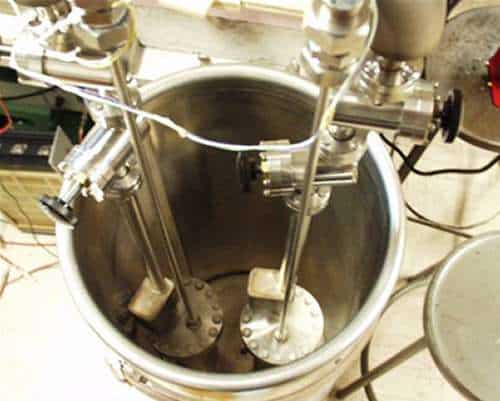
On 23 March 1989 Martin Fleischmann of the University of Southampton, UK, and Stanley Pons of the University of Utah, US, announced that they had observed controlled nuclear fusion in a glass jar at room temperature, and — for around a month — the world was under the impression that the world’s energy woes had been remedied. But, even as other groups claimed to repeat the pair’s results, sceptical reports began trickle in. An editorial in Nature predicted cold fusion to be unfounded. And a US Department of Energy (DOE) report judged that the experiments did “not provide convincing evidence that useful sources of energy will result from cold fusion.”
This hasn’t prevented a handful of scientists persevering with cold-fusion research. They stand on the sidelines, diligently getting on with their experiments and, every so often, they wave their arms frantically when they think have made some progress.
Nobody notices, though. Why? These days the mainstream science media wouldn’t touch cold-fusion experiments with a barge pole. They have learnt their lesson from 1989, and now treat “cold fusion” as a byword for bad science. Most scientists* agree, and some even go so far as to brand cold fusion a “pathological science” — science that is plagued by falsehood but practiced nonetheless.
[*CORRECTION 29/05/08: It has been brought to my attention that part of this last sentence appears to be unsubstantiated. After searching through past articles I have to admit that, despite it being written frequently, I can find no factual basis that “most scientists” think cold fusion is bad science (although public scepticism is evidently rife). However, there have been surveys to suggest that scientific opinion is more likely divided. According to a 2004 report by the DOE, which you can read here, ten out of 18 scientists thought that the hitherto results of cold-fusion experiments warranted further investigation.]
There is a reasonable chance that the naysayers are (to some extent) right and that cold fusion experiments in their current form will not amount to anything. But it’s too easy to be drawn in by the crowd and overlook a genuine breakthrough, which is why I’d like to let you know that one of the handful of diligent cold-fusion practitioners has started waving his arms again. His name is Yoshiaki Arata, a retired (now emeritus) physics professor at Osaka University, Japan. Yesterday, Arata performed a demonstration at Osaka of one his cold-fusion experiments.
Although I couldn’t attend the demonstration (it was in Japanese, anyway), I know that it was based on reports published here and here. Essentially Arata, together with his co-researcher Yue-Chang Zhang, uses pressure to force deuterium (D) gas into an evacuated cell containing a sample of palladium dispersed in zirconium oxide (ZrO2–Pd). He claims the deuterium is absorbed by the sample in large amounts — producing what he calls dense or “pynco” deuterium — so that the deuterium nuclei become close enough together to fuse.
So, did this method work yesterday? Here’s an email I received from Akito Takahashi, a colleague of Arata’s, this morning:
“Arata’s demonstration…was successfully done. There came about 60 people from universities and companies in Japan and few foreign people. Six major newspapers and two TV [stations] (Asahi, Nikkei, Mainichi, NHK, et al.) were there…Demonstrated live data looked just similar to the data they reported in [the] papers…This showed the method highly reproducible. Arata’s lecture and Q&A were also attractive and active.”
I also received a detailed account from Jed Rothwell, who is editor of the US site LENR (Low Energy Nuclear Reactions) and who has long thought that cold-fusion research shows promise. He said that, after Arata had started the injection of gas, the temperature rose to about 70 °C, which according to Arata was due to both chemical and nuclear reactions. When the gas was shut off, the temperature in the centre of the cell remained significantly warmer than the cell wall for 50 hours. This, according to Arata, was due solely to nuclear fusion.
Rothwell also pointed out that Arata performed three other control experiments: hydrogen with the ZrO2–Pd sample (no lasting heat); deuterium with no ZrO2–Pd sample (no heating at all); and hydrogen with no ZrO2–Pd sample (again, no heating). Nevertheless, Rothwell added that Arata neglected to mention certain details, such as the method of calibration. “His lecture was very difficult to follow, even for native speakers, so I may have overlooked something,” he wrote.
It will be interesting to see what other scientists think of Arata’s demonstration. Last week I got in touch with Augustin McEvoy, a retired condensed-matter physicist who has studied Arata’s previous cold-fusion experiments in detail. He said that he has found “no conclusive evidence of excess heat” before, though he would like to know how this demonstration turned out.
I will update you if and when I get any more information about the demonstration (apparently there might be some videos circulating soon). For now, though, you can form your own opinions about the reliability of cold fusion.
